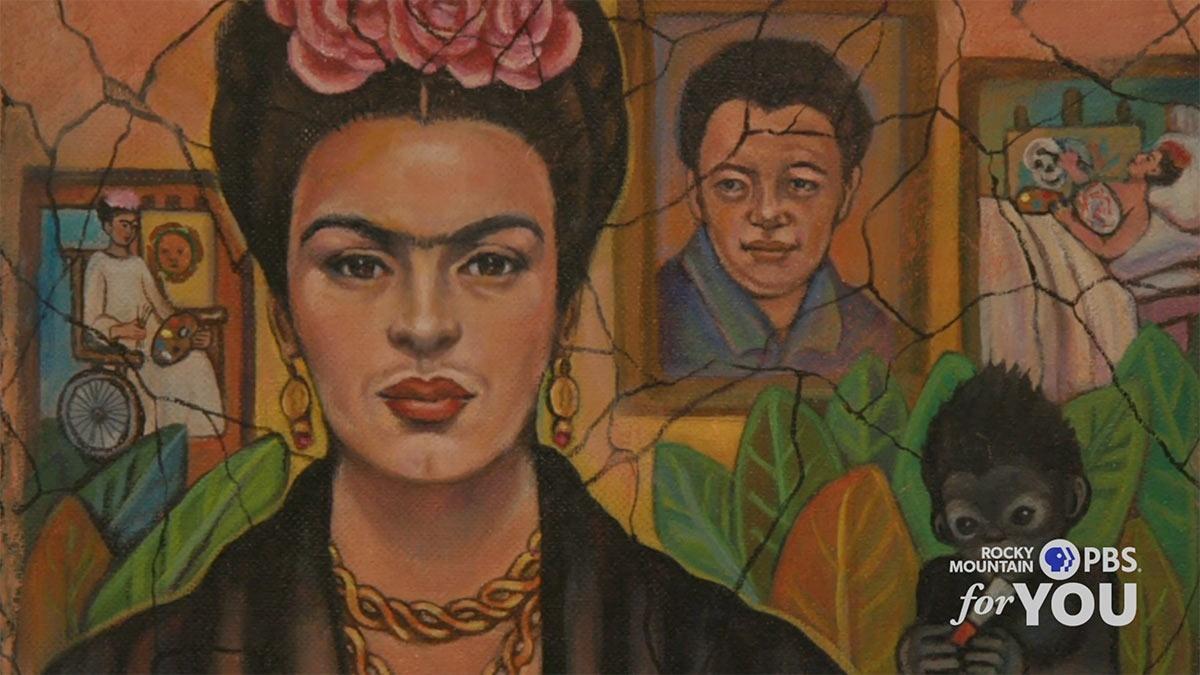“Historically, History Colorado has not adequately represented the contributions of the native, the Mexicano, the Chicano, to the history of Colorado,” Abarca said. “I believe they’ve made great strides in the last few years to right that wrong.”
The artwork is pulled from the Abarca family collection, started by Adrianna’s parents in the late 1970s.
Over 40 painters are represented, along with jewelry makers, sculptors, musicians, poets, graffiti artists, and photographers.
“We anticipate record numbers of attendees that self-identify as Chicano, Mexicano, or Latino,” Abarca said.
RMPBS spoke with several of the artists featured in the show.
Denver artist Karma Leigh submitted a painting of a friend titled Yo Soy Chicana. Leigh aimed to capture her friend’s identity as woman, artist, mother, educator, and Chicana.
“She’s very beautiful, and I chose to use a lot of neon colors for her because I feel like that’s her soul speaking through the colors. She’s very vibrant, she’s very loving and warm, and confident,” Leigh said.
Juan Fuentes, a Denver photographer born in Chihuahua, Mexico, included black and white portraits from his community.
One image shows a friend looking directly into the camera and wearing a sweatshirt that says Mi Raza on it. “His stance and the way he poses is representative of what Mi Raza represents – that power,” Fuentes said.
Another portrait shows a young boy standing in front of his father’s car and holding his fist up confidently, embodying that same Mi Raza spirit, Fuentes said.
Latino culture was sometimes looked down upon as he was growing up, or seen as derogatory, Fuentes said. “We can flip the table, and flip the narrative, and let them know that these terms are something to be very proud of.”
History Colorado plans to host small-group Cafecitos tours that can be scheduled in advance, and larger virtual events with Hecho en Colorado artists discussing their influences and experiences.
Learn more and reserve tickets on the Hecho en Colorado website.
Families can download a special Hecho en Colorado coloring book (pdf) created by the Latino Cultural Arts Center for the exhibit.



